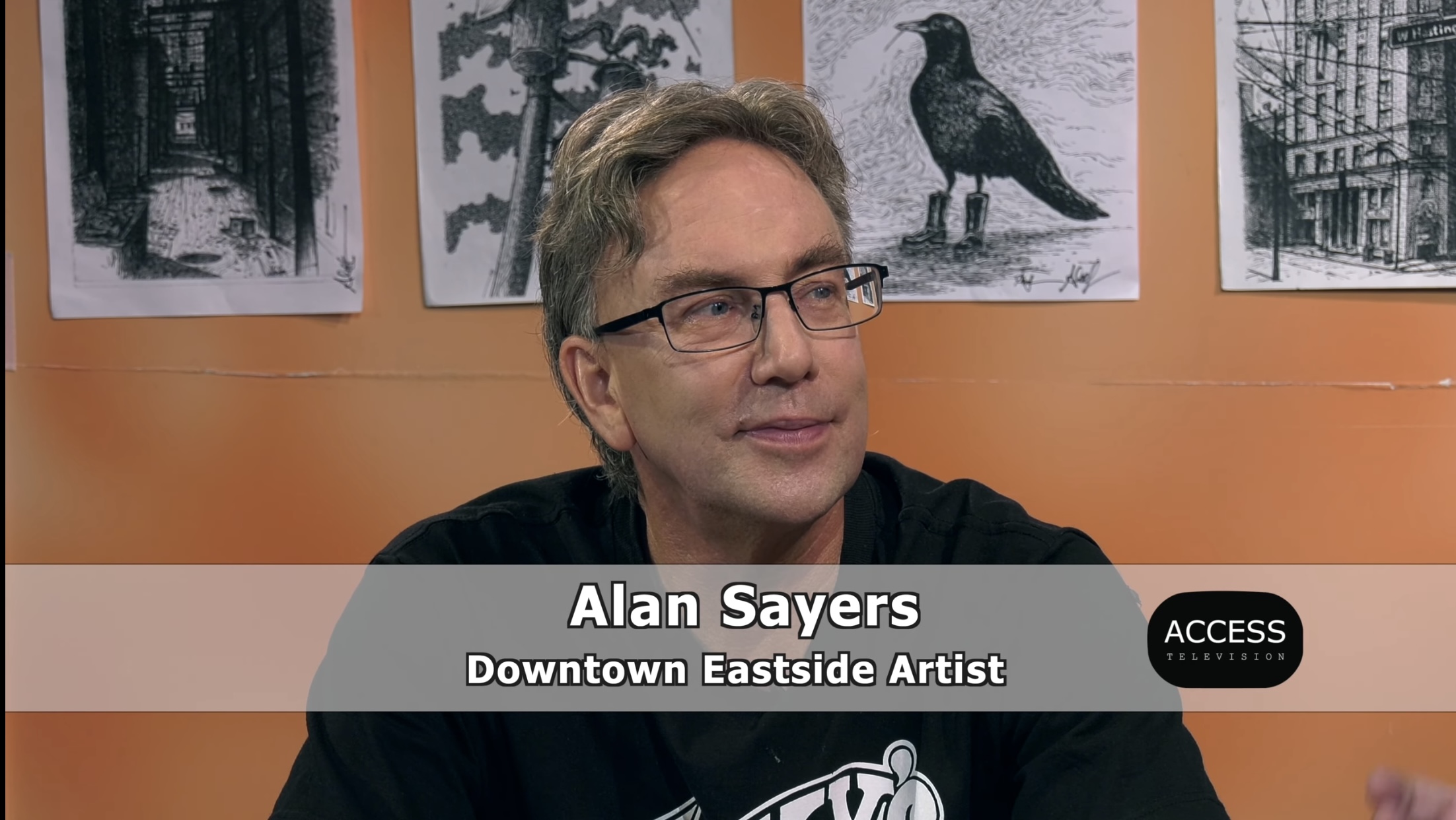[ad_1]
CANNABIS CULTURE – Prolific Downtown East -Side Artist Alan Sayers has died.
You may not know his name, but if you are a Vancouver resident or a regular follower of this magazine — you’ve seen his work.
 Celebrated for his “rockstar” portraits and gritty depictions of the architecture and individuals of Vancouver’s core communities, Sayers with his portfolio tucked under an arm was a constant presence at events and demonstrations.
Celebrated for his “rockstar” portraits and gritty depictions of the architecture and individuals of Vancouver’s core communities, Sayers with his portfolio tucked under an arm was a constant presence at events and demonstrations.
Now, Sayers is counted amongst the legions left dead — nearly 5 people per day in British Columbia — by the Opioid Crisis, another tragic casualty in the continuation of a failed policy known as the International Drug War.
He – like all the dead — was also much more.
Sayers, a born Vancouverite, and resident of Chinatown had made his living as a designer and art director when he decided to remove himself from the dilutions of the art for-profit world and dedicate himself to painting his neighbors — and his neighborhood — full-time.
“The last twelve years of my life have been very interesting and creative — monetarily challenging but creative,” Sayers said in a 2018 interview with Access Television (featured above).

His choice of perspective was atypical, painting the alleyways and shady back entries of iconic buildings, rather than the street view. Sayers painted his architectural studies most often in black and white, absent of people and from a high perspective. “Everybody down here has their head down and I want people to look up,” he said. “Who draws the back of the Dominion Building? I mean why would you? It has its place and its place in society.”
 Sayers portraiture featured several members of Vancouver’s Cannabis Activist community, as well as other prominent voices in the fight against prohibition.
Sayers portraiture featured several members of Vancouver’s Cannabis Activist community, as well as other prominent voices in the fight against prohibition.
Jodie Emery, a prominent guiding star of the movement and the CEO of Cannabis Culture, herself immortalized by Sayers pencil, had this to say, “Very stunned and saddened by this news…his artwork adorns our building and we will ensure his memory is remembered.”
As an illustrator, Sayers said he drew everything. “from famous people to some guy, to rockstars.” And the list goes on. Sayers worked constantly — and showed his work constantly. On the bus, on the sky train, in parks – to large groups or just one person. “I carry my prints just for, mad money. To stay alive in this world. But other than that I am happy being here.”
Sayers sold his prints cheap and displayed his work in places the community would see them. One of those spaces was the Herb Museum, as part of the broader collection of artifacts curated by resolute activist David Malmo-Levine. “I worked closely with Alan Sayers between 2005 and 2015. Together we created many works of art – a series we called ‘The Psychonauts’ – famous drug users from yesterday and today,” said Malmo-Levine in an email exchange with Cannabis Culture Magazine. “I would come up with a quote and an image, and Alan would put it together perfectly, and in a timely fashion. Alan added lots of perfect little details to the background that I would never have thought of – like the four hands lighting all fighting for the right to light Megan Fox’s joint, or the starry night behind Carl Sagan. Alan also did lots of detailed studies of the local architecture and haunts of the parts of downtown that I worked every day. Alan was a pleasure to work with. I have over 50 of his original artworks, in case anyone is interested in owning one.”
Neil Magnuson, operates the Cannabis Substitution Project, an out-of-pocket privately funded and volunteer-run crisis intervention initiative operating on the DTES. The CSP gives out free cannabis products to people attempting to end their addiction to opiates and other pharmaceutical hard drugs. The CSP operates out of a mobile crisis intervention van on the street, after being evicted by landlords and raided by police.
Magnuson is a longtime friend of Sayers and another of his portrait studies. Magnuson had this to say about Sayers, “He was an energetic positive force on the Downtown East-Side for decades, his influence and art will last generations but he will be sorely missed.”
[ad_2]
